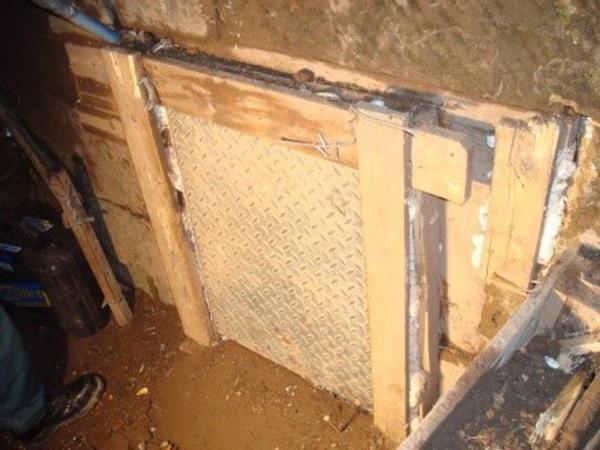Demonstrators who protest in tunnels

Tunnels are much loved by protesters as a way of making it as difficult and drawn out as possible for enforcement agents to remove them. Although their popularity has declined since the 1990s, they do still make an appearance on occasion.
Tunnels are a very familiar scenario for us and one we have come across all too regularly. We have removed many eco-warriors like Swampy, Disco Dave and Arthur Pendragon, protesters who are very fond of a tunnel protest, where our paths crossed on sites such as the A130 and Honiton by-passes and the runway protests at Manchester Airport.
These tunnels will take considerable time to construct, even with a large number of protesters working on the site. As with all such demonstrations, the faster the eviction is organised, the better for the landowner to prevent tunnels and above ground structures from being built.
All these measures have one single purpose – to hinder and delay eviction for as long as possible. They do not make it easy: the tunnel will have a shaft between 12 and 16 feet deep, at the base of that shaft will be a tunnel, or even two, generally with a metal sheet covering the entrance with a note stating that there is a protester the other side with a noose around their neck. At the end of that tunnel there will normally be a chamber where the protesters sleep.
Why protesters go underground
Protesters are looking to stay as long as possible – several days or even weeks underground - to get maximum media coverage for the event with a view to getting whatever project they are protesting cancelled. This almost never happens, but the protest will cost the landowner/developer and taxpayer a significant amount of money, in delays to the start of the development and in the cost of policing.
The harder it is to remove the protesters and the longer it takes, naturally that will have a knock-on impact on the cost of removal and policing.
One long-standing eco-warrior who started digging tunnels in the late 1990s is “Disco Dave” and his tunnelling guide is still the go-to manual of choice. He talks about the different types of tunnels and how to make life as difficult as possible for the “bailiffs”, as he called them, now known as enforcement agents..
Of course, as enforcement agents, our learning expanded as theirs did, with each new technique incorporated into our training manual. Whilst we may not know what we are going to find on a particular site, our years of experience do help us know how to quickly deal with whatever eventualities we find.
Types of tunnels
In his guide, Disco Dave suggests three main types of tunnels:
- Extremely narrow passages with minimal shoring and tight turns to make eviction harder. The lack of shoring makes it dangerous to all
- Larger tunnels with some shoring and multiple doors so slow down the enforcement agents
- An open cast or cut and cover tunnel where concrete is then poured around the shoring with the aim of making it harder for the agents to dig through
There are then obstacles to eviction, such as hiding and impeding access to the tunnel entrance and lock-ons within the tunnel. These can include arms in pipes embedded in the concrete or a neck noose attached to a door or below a hatch within the tunnel – fortunately they do put warning notices on the door within the tunnel.
The enforcement agent has to be on the alert for situations such as this, as well as making sure that we properly shore the tunnel as we go along, replacing their often poor air supplies, and being on the alert for flooding if the tunnel has been built too close to the water table or there is heavy rain.
Our approach
It takes time to build a network of tunnels, so we would always advise clients to take prompt action to remove protesters before they have a chance to build tunnels, grow numbers of supporters or gain aerial access.
Once the tunnel head is established, the eviction team will then make the shaft safe. Once complete, they can then start to make the tunnel safe. The protesters generally dig a wormhole; we have to dig and shore it all the way so we can remove protesters safely. At intervals we will come across a protester with a lock on, this is to slow the process up.
Safety is paramount on these types of protest for the protesters and our team, we have a Health and Safety Nebosh qualified member with the tunnel team and a 100% safety record.
The old way of making these tunnels was for our team to do a daytime 12-hour shift, However, once we left the site, the protesters underground would then try to destroy the works completed in the day. It would then take up to three hours to fix what was destroyed.
We then decided to work with two teams over a 24-hour period, every single day, until all the protesters were safely out. After all, in a tunnel it does not matter if it is day or night! This saves time and money for the client, not just on tunneling but also security for the site.
We have the skills, experience and equipment to undertake eco-demonstrations and all other forms of protest.
We have plenty of war stories – get in touch to arrange a meeting and we’ll share some with you!









